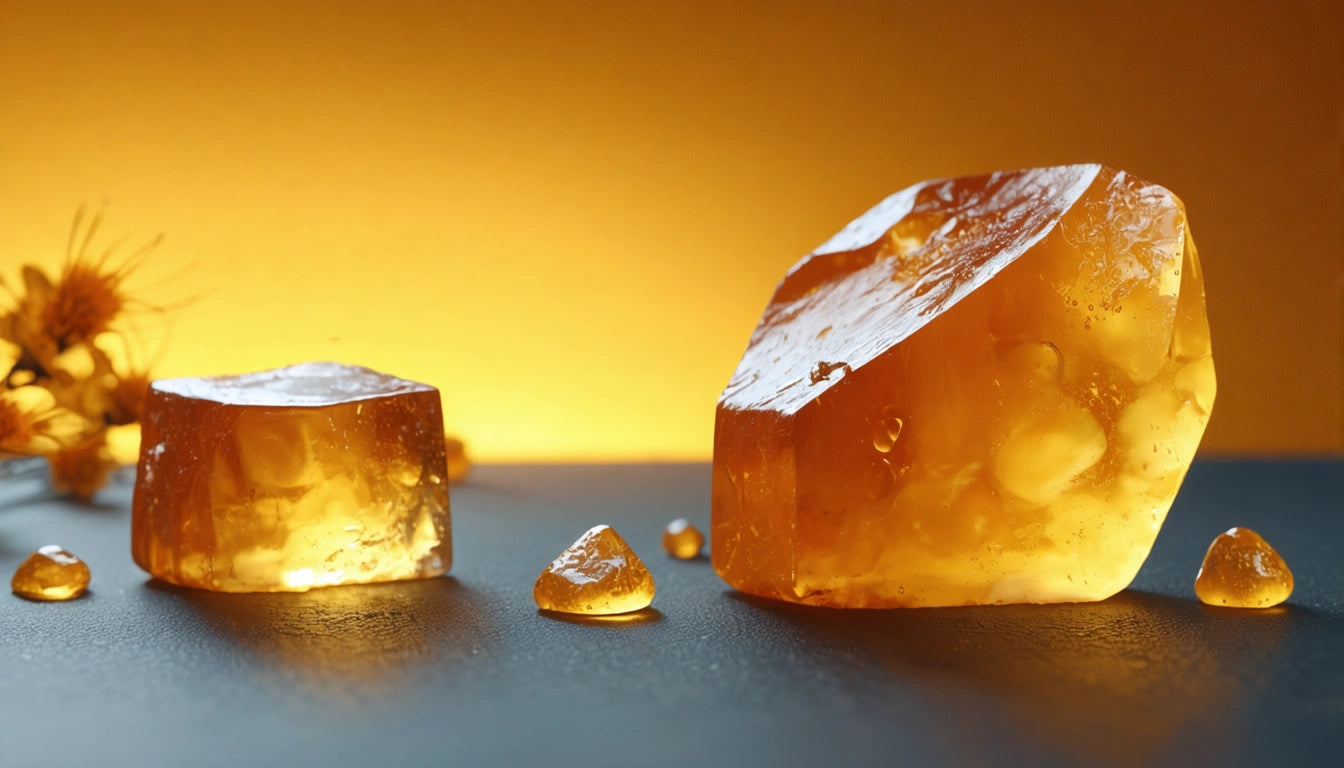Table of Contents
Wax vs Live Resin: Understanding the Differences and Benefits
Cannabis concentrates have evolved significantly over the past decade, with wax and live resin emerging as two of the most popular options for consumers seeking potent experiences. While they may appear similar at first glance, these concentrates differ substantially in their production methods, terpene profiles, and overall effects. This comprehensive guide explores the key distinctions between wax vs live resin to help consumers and producers make informed decisions.
Extraction Methods and Processing
The fundamental difference between wax and live resin begins with the starting material and extraction process.
Wax Production
Wax concentrates are typically produced using dried and cured cannabis flower. The plant material undergoes a standard drying and curing process before extraction, which can take several weeks. During this time, many volatile compounds naturally degrade. The extraction typically uses butane, propane, or CO2 as solvents, followed by a purging process that creates the characteristic opaque, waxy texture.
Live Resin Production
Live resin represents a more specialized approach to extraction. As detailed in this guide to live resin production, the process begins with flash-freezing freshly harvested cannabis plants. This crucial step preserves the plant's terpene profile by skipping the drying and curing phase where terpene degradation typically occurs. The frozen material then undergoes a carefully controlled extraction process, usually with butane or propane, at very low temperatures.
Terpene Profiles and Flavor Experience
The preservation of terpenes creates one of the most significant differences between these concentrates.
Live resin is renowned for its robust terpene profile, often containing up to five times more terpenes than traditional concentrates like wax. This translates to a more complex aroma and flavor profile that closely resembles the original plant. Live resin variants like live resin sugar offer slightly different consistencies while maintaining this terpene advantage.
Wax, while still aromatic, typically has a less pronounced terpene profile due to the degradation that occurs during the drying and curing process. The flavor tends to be more straightforward and less nuanced than live resin. Sugar wax vs live resin comparisons often highlight this distinction, with sugar wax offering a granulated texture but still lacking the full terpene spectrum of live products.
Potency and Effects Comparison
Both concentrates deliver high potency, but with notable differences in their effects:
- Wax typically ranges from 60-90% THC, delivering powerful effects with less emphasis on strain-specific characteristics
- Live resin generally contains 65-95% THC, but its higher terpene content creates a more nuanced experience
- The entourage effect is more pronounced in live resin due to better preservation of the plant's complete chemical profile
- Wax tends to produce more straightforward effects focused primarily on THC's impact
As explored in this comparison of live resin benefits, the fuller spectrum of compounds in live resin often translates to a more balanced experience that better represents the original strain's effects.
Consumption Methods and Equipment
Both concentrates can be consumed through similar methods, though certain approaches may better showcase their unique properties:
Dabbing
Dabbing remains the preferred consumption method for both wax and live resin. However, temperature control becomes especially important with live resin to preserve its delicate terpenes. Lower temperature dabs (470-540 °F) are recommended for live resin to avoid destroying its complex flavor profile.
Vaporization
Portable electronic dab rigs and concentrate vaporizers work well with both products. For commercial operations, specialized filling equipment for cartridges ensures consistent dosing and prevents terpene loss during the packaging process, which is particularly important for preserving live resin's quality.
Infusion
Both concentrates can be used to infuse flower or added to joints, though live resin's premium status and higher price point make wax the more common choice for this application.
Price Points and Market Accessibility
The price difference between these concentrates reflects their production complexity:
Wax is generally more affordable, typically priced 30-50% lower than live resin. The simpler production process and less specialized equipment requirements contribute to its accessibility. This makes wax a popular entry point for consumers new to concentrates.
Live resin commands premium pricing due to its specialized production requirements, including flash-freezing equipment, low-temperature extraction capabilities, and more careful handling throughout the process. The quality difference compared to other concentrates justifies this higher price point for many consumers.
Production Considerations for Manufacturers
For cannabis processors considering which concentrates to produce, several factors come into play:
Wax production offers lower startup costs, greater yield from input material, and simpler processing requirements. It's often the starting point for new extraction operations before they expand into premium offerings.
Live resin requires significant investment in specialized equipment, including flash-freezing capability and precise low-temperature extraction systems. The process is more labor-intensive and requires greater expertise, but commands higher market prices and attracts discerning consumers.
When comparing cured resin vs live resin production methods, manufacturers must weigh these cost and complexity factors against potential market positioning and profit margins.
Future Market Trends and Consumer Preferences
The concentrate market continues to evolve, with several trends shaping the wax vs live resin landscape:
Consumer education is driving increased appreciation for full-spectrum products like live resin. As users become more knowledgeable about terpenes and the entourage effect, premium concentrates gain market share despite higher prices.
Hybrid products are emerging that aim to bridge the gap between these categories. Innovations in extraction technology are enabling producers to create new concentrate types that combine aspects of both wax and live resin at intermediate price points.
Technological advancements in extraction equipment continue to improve efficiency and reduce production costs for live resin, potentially making these premium products more accessible to a broader consumer base in the future.
Whether you prefer the affordability and straightforward potency of wax or the complex, strain-specific experience of live resin, understanding these key differences helps ensure you select the right concentrate for your preferences and needs.











Leave a comment
All comments are moderated before being published.
This site is protected by hCaptcha and the hCaptcha Privacy Policy and Terms of Service apply.